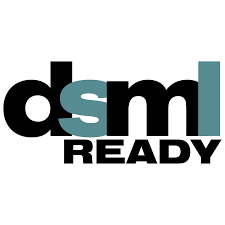
Introduction to the Course
This course introduces the fundamentals of data science and Machine learning, providing a solid foundation for aspiring data scientists. It covers essential topics like data handling, analysis, and visualization.
Who is this course for?
- Freshers with any Graduation degree
- Professionals who want to switch from NON-IT to IT
- Professionals who want to boost there career
Requirements
- Basic understanding of Python Programming Language
- We'll use Anaconda & Jupyter Notebooks (a free, user-friendly coding environment)
- Familiarity with basic Python knowledge is strongly recommended
- Basic Programming concepts like Variables, Data Types and Basic Arithmetic
- Basic Control Flows like Conditional Statements, Loops, Break and Continue
What You'll Learn
Python▶
- Introduction to Python.
- User Interface or IDE (Anaconda and collab).
- Python architecture.
- Data types, Tokens.
- Keywords, Variables.
- Operators (assignment, comparison, comparative, arithmetic, Logical, Conditional, Bitwise).
- Type casting.
- Input and output functions.
- String manipulation (Indexing, slicing, functions, Access elements, Reversing).
- Data structures and its manipulation (List, tuple, dictionary, set, Frozen set).
- Control flow statements (if, else, elif, Nested if).
- Loops (for, while, Nested loop, loop else).
- Break, continue, pass, range statements and usage.
- List comprehension.
- Functions (Inbuilt and user defined functions).
- Invoking function, passing arguments into function, return keyword.
- Local and global variables.
- Lambda function (map, filter, reduce, zip).
- Introduction to Libraries (OS, datetime, calendar, sys, math).
- Recursive function and usage.
- File Operations (read, write, open, save).
- Serialization and deserialization.
- Exception handling (default exception and errors, catch exceptions, Try except-else-finally block, user defined exceptions).
- Regular expressions (Match, search, grouping, Flag).
- Iterators, Generators, Decorators.
Numpy▶
- Order to Cash Cycle. Creating NumPy arrays.
- Downloading and parsing data.
- Indexing and slicing.
- Multidimensional array.
- Array views and copies.
Pandas▶
- Series and DataFrame.
- Multilevel series.
- Grouping data in DataFrame.
- Aggregate functions, Merge, concatenate and joining DataFrames.
- Manipulating data, Data wrangling, understanding data using panda.
Plots▶
- Different types of plots using matplotlib and seaborn library.
- Subplots, labelling and arranging plots, save plots.
- Regression plots.
- Heat map, distribution plot, correlation plot, style functions.
EDA▶
- Univariate, Bivariate, and multivariate analysis.
- Multicollinearity, encoding techniques.
- Standardization and Normalization.
- Interpretation data using plots.
- Data cleaning and Handling null values.
SQL▶
- Data, Information, Database, Table, Types of databases, Schema.
- Install of MySQL workbench and data import options.
- Data types, comments.
- Date Definition Language (DDL), Data Manipulation Language (DML), Data Query Language (DQL), Transaction Control Language (TCL), Data control Language (DCL) statements.
- Operators (Arithmetic, Comparison, Logical, Bitwise).
- Boolean expression, date expression.
- SQL clauses.
- SQL constraints.
- Aggregate and Non-aggregate functions.
- Unions, Types of keys, Joins, Views.
- Subqueries.
- Window functions.
Stats for Data Science▶
- Mean, Median, Mode, Variance, Standard deviation.
- Z score, t-distribution, Z vs T stats.
- Probability distribution function, Binomial distribution, Normal distribution.
- Bias variance dichotomy.
- Sample vs population stats.
- Sampling and t-test, Random variables.
- Central Limit theorem.
- Covariance, Correlation.
- Hypothesis testing, Type 1, Type 2 error.
- One sample test, two sample test (independent test, dependent test).
- Chi-square test, ANOVA test.
- Parametric and Non-Parametric testing.
- Stats using SciPy library.
- Feature selection.
Machine Learning▶
- Intro to machine learning.
- Mathematical background of machine learning.
- Data split, Test train validate datasets
- Supervised learning: Linear regression, multilinear regression, polynomial regression, Ridge regression, Lasso regression, Elastic net regression, Logistic regression, R2, Adjusted R2.
- Unsupervised learning: Decision tree, Random Forest, Naïve Bayes, KNN classification, K-Means, DBscan clustering, PCA, Support Vector Machine, Out of Bag evaluation, XGBoost, AdaBoost, Metrics for classification (confusion matrix, ROC_AUC, F1 score, Accuracy, Precision, Recall), overfitting and underfitting.
- Model building, Hyper parameter tuning.
Trainer Expertise
This program is monitored by a team of professionals. We have crafted this program using the learnings of 23+ years of experience handling corporate training and job oriented training. Our students are working in almost all top MNCs across India.
Job Opportunities
100% placement record — each student successfully transitioned into a desired Data Science and Machine Learning career role.
Course Duration
16 Weeks
Fees
Training + Job Assistance: ₹35,000
- Admission: ₹10,000
- After 1 month: ₹25,000

